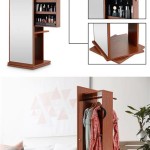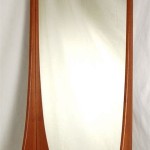Bathroom Mirror Frame: Enhancing Aesthetics and Functionality
The bathroom mirror is a ubiquitous feature in almost every home, serving a fundamental role in daily grooming and hygiene routines. While its reflective surface is paramount for its practical purpose, the frame surrounding the mirror significantly contributes to the overall aesthetics and functionality of the bathroom. Bathroom mirror frames are available in a myriad of materials, styles, and sizes, offering homeowners the opportunity to personalize their space and complement their existing decor.
The selection of an appropriate bathroom mirror frame requires careful consideration of several factors, including the size and shape of the mirror, the overall style of the bathroom, the material of the frame, and the budget allocated for the project. A well-chosen frame can elevate the appearance of the mirror, transforming it from a purely functional object into a decorative element that enhances the ambiance of the room. Conversely, a poorly chosen frame can detract from the overall design and create a disjointed aesthetic.
Material Considerations: Balancing Durability and Style
The material used for a bathroom mirror frame is a critical factor influencing its durability, aesthetics, and cost. Given the humid environment of a bathroom, moisture resistance is a particularly important consideration when selecting the frame material. Several popular options are available, each with its own set of advantages and disadvantages.
Wood: Wood frames offer a classic and timeless appeal, providing a warm and natural aesthetic to the bathroom. They can be easily customized with various stains, paints, and finishes to match the existing decor. However, wood is susceptible to moisture damage and requires proper sealing and maintenance to prevent warping, rotting, and the growth of mold and mildew. Hardwoods like oak, maple, and cherry are generally more durable and moisture-resistant than softwoods like pine. Engineered wood products such as MDF (Medium-Density Fiberboard) and plywood offer a more cost-effective alternative to solid wood, but they may not be as durable or moisture-resistant.
Metal: Metal frames offer a sleek and modern aesthetic, providing a clean and minimalist look to the bathroom. They are generally more durable and moisture-resistant than wood frames. Popular metal options include stainless steel, aluminum, and brass. Stainless steel is a particularly good choice for bathrooms due to its resistance to rust and corrosion. Aluminum is lightweight and affordable, but it may be prone to scratching and denting. Brass offers a more elegant and traditional look, but it requires regular polishing to prevent tarnishing.
Plastic: Plastic frames are a cost-effective and durable option that is resistant to moisture damage. They are available in a wide range of colors, styles, and finishes. Common plastic materials used for bathroom mirror frames include PVC (Polyvinyl Chloride) and acrylic. PVC is a durable and affordable option that is resistant to water damage and mildew. Acrylic is a more expensive option that offers a high-gloss finish and is available in a variety of colors. However, plastic frames may not have the same aesthetic appeal as wood or metal frames.
Tile: Tile frames offer a unique and customizable look, allowing homeowners to integrate the mirror seamlessly into the bathroom's existing tile design. They can be constructed using a variety of tile materials, including ceramic, porcelain, and glass. Tile frames are durable, moisture-resistant, and easy to clean. However, they can be more expensive and labor-intensive to install than other types of frames.
Style Considerations: Harmonizing with Bathroom Decor
The style of the bathroom mirror frame should complement the overall design of the bathroom. Several popular styles are available, each with its own unique aesthetic.
Traditional: Traditional frames are characterized by their ornate details, intricate carvings, and classic finishes. They often feature decorative moldings, beveled edges, and antique-inspired hardware. Traditional frames are well-suited for bathrooms with a classic or formal aesthetic. Common materials used for traditional frames include wood, metal, and composite materials.
Modern: Modern frames are characterized by their clean lines, minimalist designs, and sleek finishes. They often feature simple geometric shapes and neutral colors. Modern frames are well-suited for bathrooms with a contemporary or industrial aesthetic. Common materials used for modern frames include metal, glass, and plastic.
Rustic: Rustic frames are characterized by their natural materials, weathered finishes, and organic textures. They often feature reclaimed wood, distressed metal, and earthy tones. Rustic frames are well-suited for bathrooms with a farmhouse or bohemian aesthetic. Common materials used for rustic frames include wood, stone, and metal.
Transitional: Transitional frames blend elements of traditional and modern styles, creating a balanced and versatile aesthetic. They often feature clean lines and simple details, combined with classic finishes and decorative accents. Transitional frames are well-suited for a variety of bathroom styles. Common materials used for transitional frames include wood, metal, and composite materials.
Frameless: While not a frame in the traditional sense, frameless mirrors offer a minimalist and contemporary look. They are simply mirrors with polished edges, providing a clean and seamless aesthetic. Frameless mirrors are well-suited for bathrooms with a modern or minimalist aesthetic. They are also a good option for small bathrooms, as they can help to create a sense of spaciousness.
Installation and Maintenance: Ensuring Longevity
The installation of a bathroom mirror frame can be a relatively straightforward process, but it is important to follow proper installation techniques to ensure that the frame is securely attached to the wall and that the mirror is properly supported. The specific installation method will depend on the type of frame and the type of wall. Some frames can be hung using hooks or brackets, while others may require adhesive or screws.
Before installing the frame, it is important to ensure that the wall is clean, dry, and level. It is also important to locate any studs behind the wallboard and to use anchors to secure the frame to the studs. If the wall is made of tile or other hard material, it may be necessary to drill pilot holes before installing the screws.
Once the frame is installed, it is important to maintain it properly to ensure its longevity. Wood frames should be regularly cleaned with a damp cloth and treated with a wood preservative to prevent moisture damage. Metal frames should be cleaned with a metal polish to prevent tarnishing. Plastic frames should be cleaned with a mild soap and water. Tile frames should be cleaned with a grout cleaner to prevent the buildup of mold and mildew.
Regular maintenance, including cleaning and inspection, will help to extend the lifespan of the bathroom mirror frame and keep it looking its best. Addressing any minor issues promptly will prevent them from escalating into more serious problems that could require costly repairs or replacements.
Beyond the purely aesthetic and practical concerns, the selection of a bathroom mirror frame can also contribute to the overall value of the home. A well-chosen and well-maintained frame can enhance the perceived quality of the bathroom, making it more attractive to potential buyers. While it may seem like a small detail, the bathroom mirror frame plays a significant role in the overall appeal and functionality of the bathroom. Thoughtful consideration of the material, style, installation, and maintenance will ensure that the chosen frame complements the space and provides years of enjoyment.
Ultimately, the ideal bathroom mirror frame is one that seamlessly blends with the existing decor, provides adequate support for the mirror, and is durable enough to withstand the humid environment of the bathroom. By carefully considering the various factors outlined above, homeowners can select a frame that enhances the aesthetics and functionality of their bathroom, creating a space that is both stylish and practical.
Consideration should also be given to the lighting around the mirror. The frame should not obstruct any light source, and the material and finish should not create unwanted glare. The placement of the mirror and the frame should be carefully planned to maximize the available light and to create a comfortable and functional grooming area.
The cost of a bathroom mirror frame can vary widely depending on the material, style, and size. Simple plastic frames can be purchased for as little as $20, while elaborate wood or metal frames can cost several hundred dollars or more. It is important to set a budget before beginning the selection process and to compare prices from different retailers.

How To Install A Mirrorchic Bathroom Mirror Frame Momhomeguide Com

Matte Black Mirror Frames Bathroom Trim Mirrormate

Mirror Frame Diy How To Update A Basic Bathroom Our Faux Farmhouse

How To Frame A Mirror

Mirror Frame Diy How To Update A Basic Bathroom Our Faux Farmhouse

Porter Black Framed Wall Mirror Rectangular Vanity Multiple Sizes Com

Diy Framed Bathroom Mirrors Living With Lady

How To Frame A Bathroom Mirror Easy Casa Watkins Living

Mirror Frame Diy How To Update A Basic Bathroom Our Faux Farmhouse

Build A Wood Mirror Frame With This Easy Diy Building Bluebird








